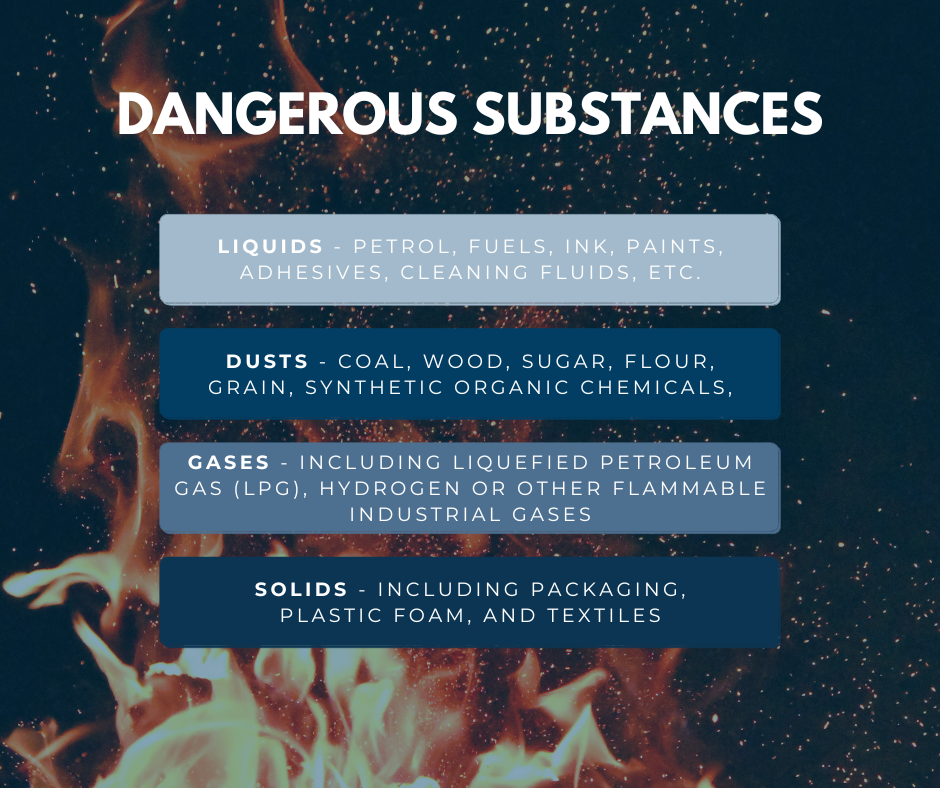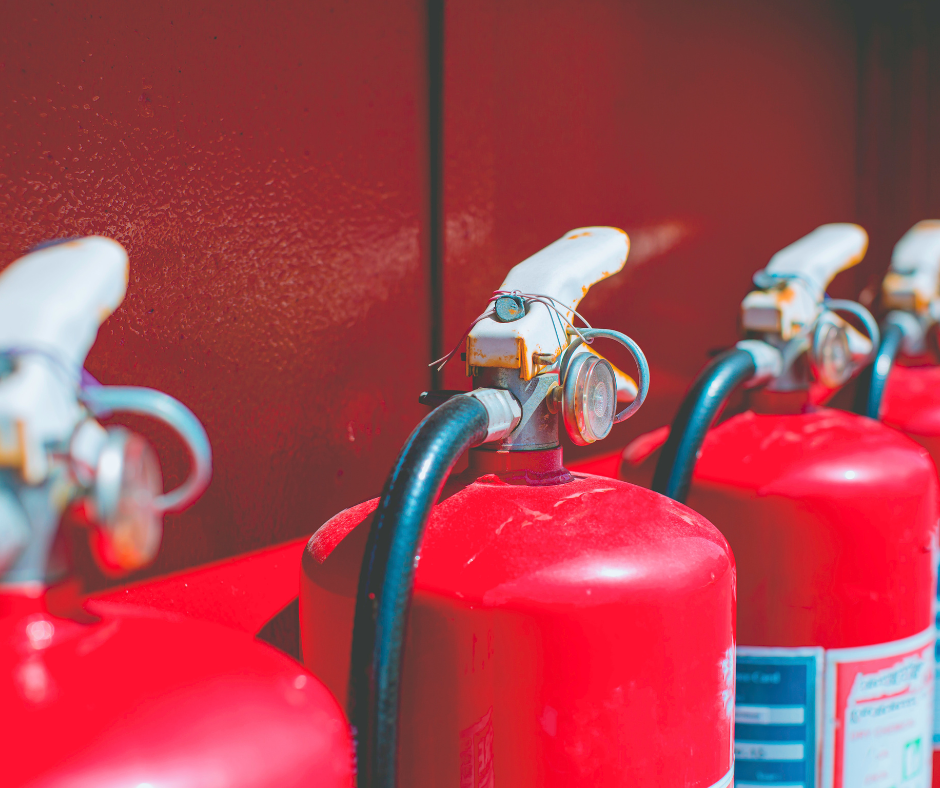As part of November’s Hazard of the Month, Fire, we’re highlighting two key areas: Fire Safety and Fire Wardens.
Fire Safety
 Work involving flammable substances like gases, vapours, mists, or combustible dusts can lead to fires or explosions if mixed with air and ignited. These incidents can cause severe damage to lives, property, the environment, and businesses.
Work involving flammable substances like gases, vapours, mists, or combustible dusts can lead to fires or explosions if mixed with air and ignited. These incidents can cause severe damage to lives, property, the environment, and businesses.
Preventative measures, including proper storage, ventilation, and employee training, are crucial to minimise the risks associated with these substances and ensure workplace safety.
Dangerous substances that could cause a fire come in many forms. These include:
- Liquids: Including petrol, fuels, ink, paints, adhesives and cleaning fluids
- These emit a flammable vapour which can ignite or explode when mixed with air
- Dusts: Including coal, wood, sugar, flour, grain, synthetic organic chemicals, and some metals
- They can be be raw materials, intermediates, finished or waste products
- Can be found across many industries, including food/animal feed, chemicals, woodworking, rubber and plastic processing and metal powders
- Combustible dust clouds can violently explode with a source of ignition
- Gases: Including liquefied petroleum gas (LPG), hydrogen or other flammable industrial gases
- Often stored in pressurised containers, uncontrolled releases of these gases can ignite
- Solids: Including packaging, plastic foam, and textiles
- These can burn fiercely and give off dense, and sometimes poisonous, smoke
Learn more about fire hazards and how to control them with our Fire Safety Online Training Course. Get 10% off this course with the code ‘fire10’!
Fire Wardens
 One of the responsibilities of a fire warden is to understand the different types of fires and the different types of equipment required to fight these fires. There are a number of fire fighting tools, including but not limited to:
One of the responsibilities of a fire warden is to understand the different types of fires and the different types of equipment required to fight these fires. There are a number of fire fighting tools, including but not limited to:
- Fire Extinguishers – There are multiple types of fire extinguishers, each designed for use of a different type of fire.
- Water: For fires that involve organic solid materials such as wood, cloth, paper, plastics, coal etc.
- Water Spray: For fires that involve organic solid materials such as wood, cloth, paper, plastics, coal etc. Have significantly improved fire fighting capability compared to standard water extinguishers.
- Water Mist (De-Ionised Water): Suitable for A, B, C rated risks, small amounts of burning fats, and some electrical fires.
- Powder: For use on organic solids or liquid fires (grease, fats, oil, paint, petrol, etc.), but not on chip or fat pan fires.
- Dry Powder: For use on fires involving combustible metals.
- Foam: For fires involving solids or burning liquids, but not chip or fat pan fires.
- CO2: For live electrical equipment – care must be taken in small rooms.
- Wet Chemical: For Class F fires, involving cooking oils and fats
- Fire Blankets – Used for smothering small fires, usually cooking fires.
- Hose Reel – for organic solid material fires.
- Fire Buckets – A bucket with water can be used as a supplementary to an extinguisher or a first attack if one is not available for Class A fires.
Anyone using a fire extinguisher should know what extinguishers are present in their workplace and what fire types they are suitable for.
Learn more about Fire Warden responsibilities with our Fire Wardens online training course. Get 10% off this course with the code ‘fire10’!

Fire Safety and Fire Wardens training courses are essential tools in protecting your workers from the risk of fire. Make sure you don’t miss out on our 10% off deal on these courses, available until the end of November. Simply enter the code ‘fire10’ at checkout to save!
Read more Safety Spotlight blogs here
To keep up to date with the latest health & safety news and advice, follow us on social media:
